Vitus ZX-1 EVO CRS ETAP AXS
Combing both form and function, the ZX-1 EVO looks fast and is fast
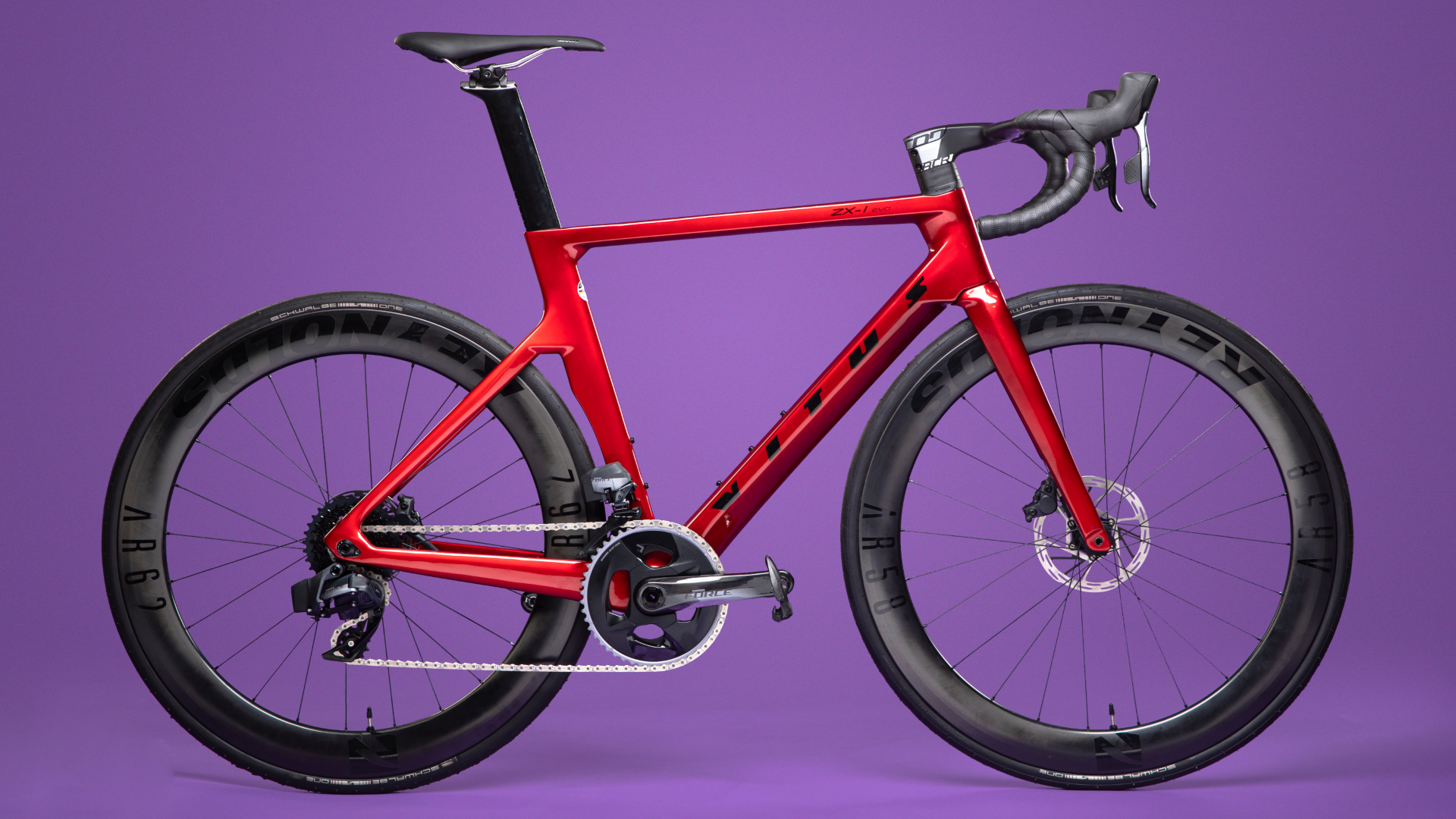
Thanks to the deep wheels, tidy cockpit and aero detailing of the frame, the Vitus ZX-1 EVO is hugely fast and fun to ride. It holds its speed well and the overbuilt chassis is super stiff and really rewards a stinging effort. Coming from Wiggle’s in-house bike brand, the value for money is superb, costing less than a third the price of similarly specced bikes from the big brands.
-
+
Great value
-
+
Stiff and responsive frame
-
+
Deep wheels
-
+
Very tidy cockpit
-
+
Adjustable layback seatpost
-
-
Can't preselect handlebar reach and width
-
-
Seatpost isn't very forgiving
You can trust Cycling Weekly.

The ZX-1 EVO is Vitus’s aerodynamically optimised racing platform which has recently been given a revamp to bestow the bikes with a spec and aesthetic that is every bit the match of those from more established brands.
As the in-house bike brand of retail giant Wiggle, there has been a strong emphasis on value, with the ZX-1 EVO coming in significantly cheaper than what a quick glance at the spec might suggest.
Although that said, in this latest update, there has been a bit of a shift towards rather fancier components rather than entirely optimising for price. The previous SRAM Force AXS model used Wiggle’s in-house carbon wheels and cockpit, whereas the ZX-1 Evo bike comes with wheels from Reynolds and handlebars from Vision.
As you might expect, there has been an increase in price, going from £3,699.99 previously to £4,199.99 with this model. The change in spec probably doesn’t quite fully account for this – but with so many brands increasing their prices with no change to the components at all, it’s nice that here you are at least getting something more for your money.
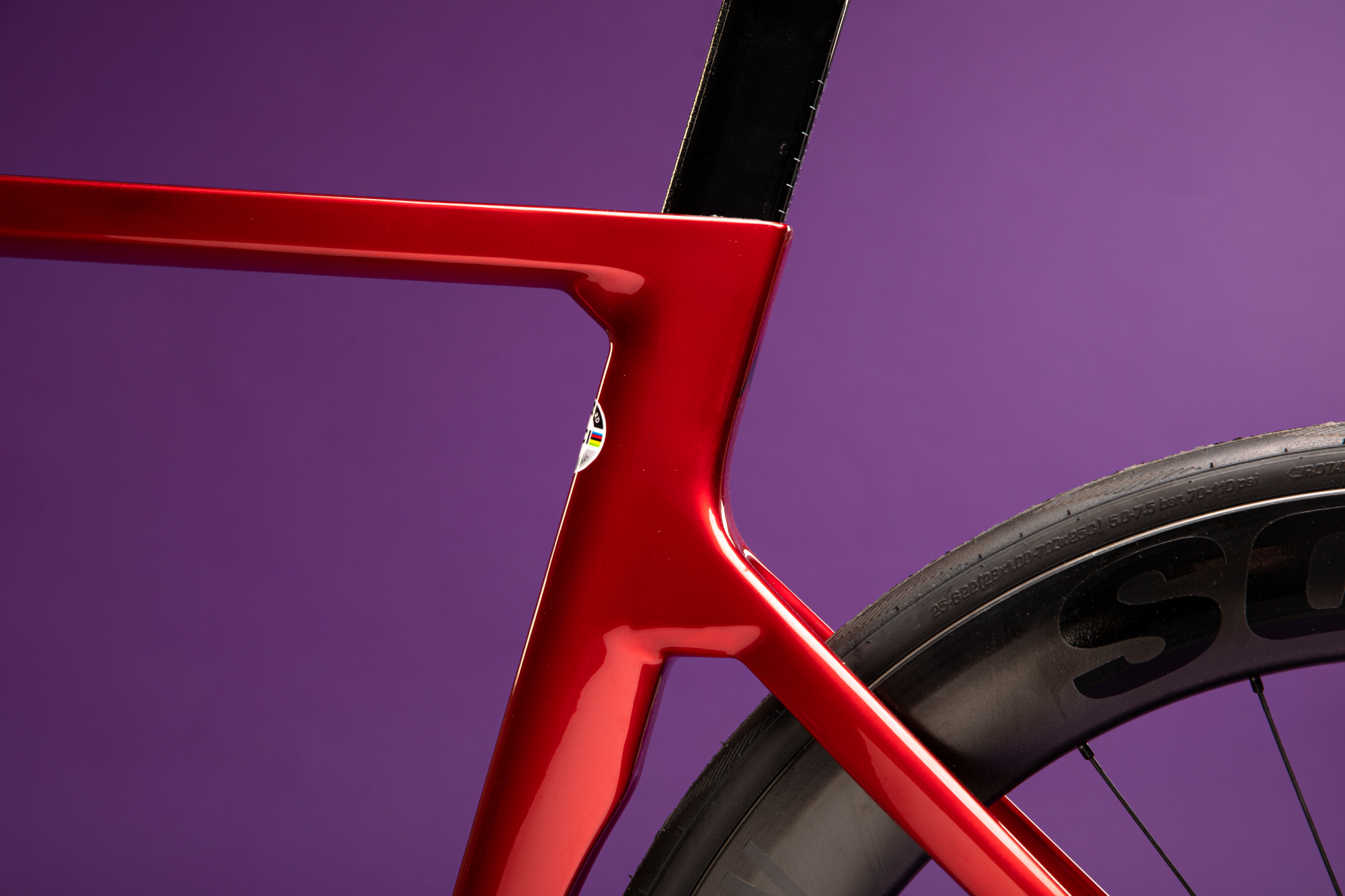
The spec
Frame
Vitus claims that the ZX-1 EVO “exhibits up to 45% less drag than the previous ZX-1 when built as a full bike”, although no extra detail is provided on how the testing was carried out. That said, with wider and deeper rims, dropped seatstays, a one-piece handlebar/stem and no exposed cables around the cockpit, all the hallmarks of an aerodynamic bike are certainly there.
Much of the tubing is quite boxy, with the angular faces and large cross-sections playing their role in improving the frame’s aerodynamic performance and torsional stiffness. The bottom bracket area is reassuringly overbuilt and houses a press-fit bottom bracket.
It’s quite clear that the focus of this bike is power transfer and aerodynamic efficiency, with weight and compliance of secondary concern – although not entirely forgotten, at 8.4kg in a size medium on our scales, the ZX-1 EVO is still not overly heavy.
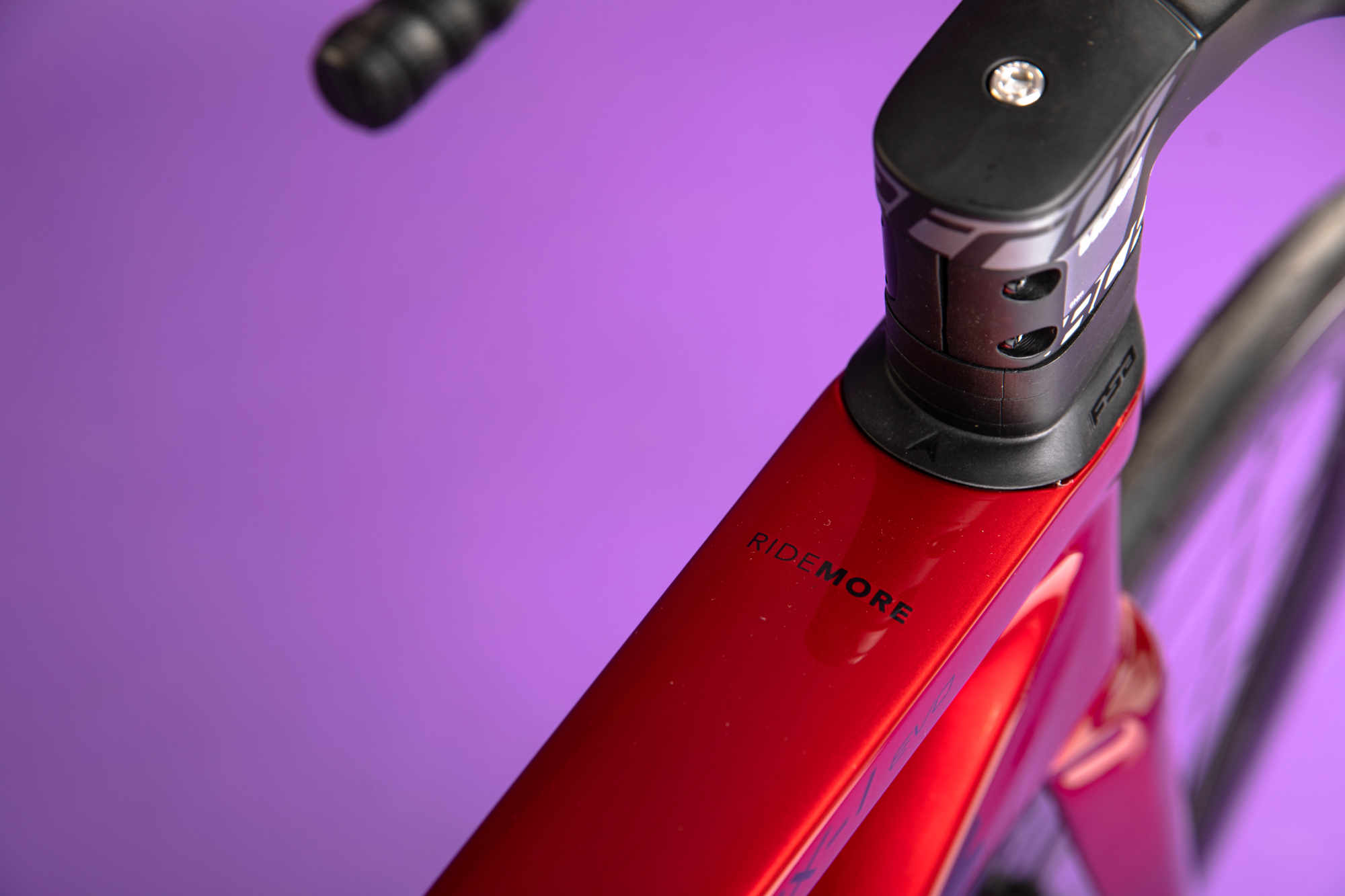
With the cable routing entering the bike through the headtube – rather than the downtube as previously – the cables are completely hidden right up until they pop out by the brake calipers, making for a very clean setup which looks much smart than money other bikes around this price point.
There aren’t even really any maintenance headaches that arise as a consequence of this level of integration. With the electronic shifting there aren’t any gear cables to ever need replacing, and bleeding hydraulic disc brakes doesn’t require you to ever move the cables from their positions in the frame.
Tyre clearance stands officially at 30mm, but the clearances are very generous so that recommendation does strike as a little conservative. The hub spacing is 12x100mm at the front and 12x142mm at the back, so no unwelcome surprises in that department.
Regarding the geometry, in my size medium, the stack stands at 543mm and the reach at 387mm. This puts it well within the range we’d expect for a race-oriented bike, as well as being is 5mm lower and 2mm longer than the outgoing model.
The head angle is 72.4° which is a little slacker than you might typically see, but not by so much as to as a radical change. The chainstays have stayed the same relative to the previous ZX-1 at 410mm. Just as before, these stay the same across all sizes.
For me in pretty much the middle of the size range, this length generally suits me well for fast and aggressive riding. But if you’re looking at largest size in the range, you might find the handling a little twitchy as the chainstays are proportionality much shorter. Conversely, in the smallest size, you might find the handling a bit more cumbersome, compared to a bike which sizes the chainstay length proportionality.

Finishing kit
The deep section seatpost has a nice touch in that the saddle clamp on top is adjustable fore and aft, meaning a huge range of saddle laybacks can be accommodated without having to go through the faff and expense of swapping out a post. For getting a great fit from the off, this is a great inclusion.
However, one of the drawbacks of a deep section seatpost is that they tend to offer much less flex than a skinnier design, meaning that vibrations and buzz from the road can be bit more noticeable as you’re riding along.
On the size medium I’ve been riding, I found that the cutout in the seat tube as it curves around the rear wheel meant that I could only just about insert the seatpost low enough to be able to ride. At 177cm tall, I’m even at the upper end of the height range for this size, but my legs were any shorter, I wouldn’t have been able to ride the bike without cutting down the seatpost a little.
Perched on top of the post is a Vitus Ti Rail saddle. It’s quite traditional in being long and rather narrow, although there is a fairly large central cutout. Saddle choice is largely a personal matter, but although I tend to prefer shorter-nosed models, I didn’t get on too badly with the stock setup.
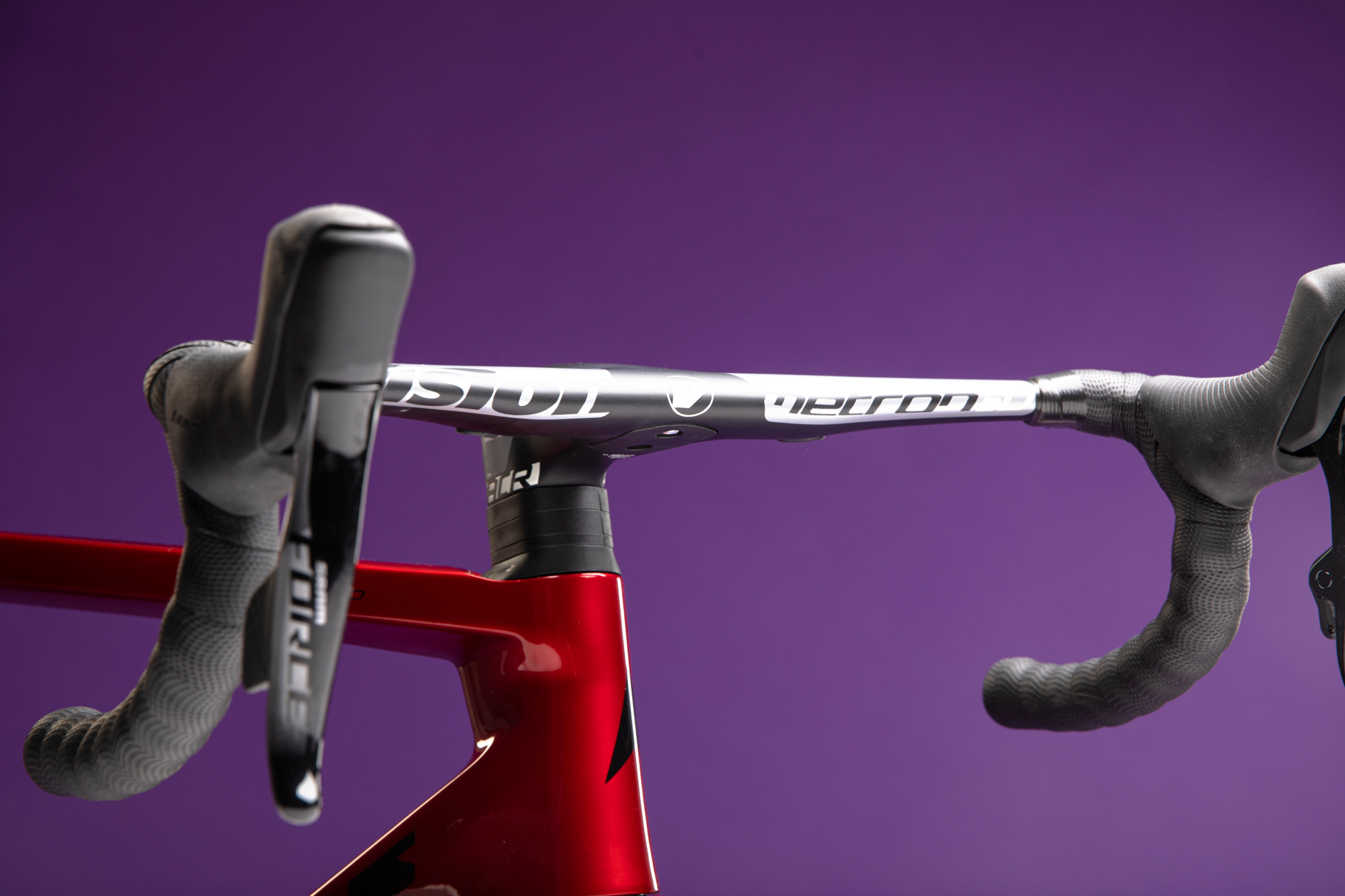
The handlebars are the well-regarded Vision Metron 5D ACR Carbon. It’s a one-piece setup and, with the cables routing internally through it, the result is a very clean and uncluttered looking cockpit. Considering the RRP of these handlebars, they’re a pretty impressive inclusion for the overall price of this bike.
There is a bit of a caveat, though, in that although Vitus has tried to spec a width and reach that would suit the widest number of people, it is still a quite unlikely that the 110mm effective stem length and 420mm will match your perfect position spot on. Vitus only sell the bike with the stock setup, so if those measurements don’t happen to suit you, you’re looking at £619.95 for a direct replacement.
Wheels
Here we have the Reynolds AR 58/62 DB Carbon Clincher, tubeless ready wheelset. This has quite differing rim profiles front and rear, with the front coming with an internal rim width of 19mm and an external width of 28mm while being – as the name would suggest – 58mm deep. The rear, on the other hand, has internal width of 21mm, external of 30mm and the depth is 62mm
There’s a broad consensus that for optimum aerodynamic efficiency, the rim should be 105% of the tyre width. And so with this wheelset, you could run a narrower tyre at the front for smaller leading edge and potentially better aerodynamics but put a slightly wider tyre on the rear for better rolling resistance and comfort – all the while maintaining that 105% rule.
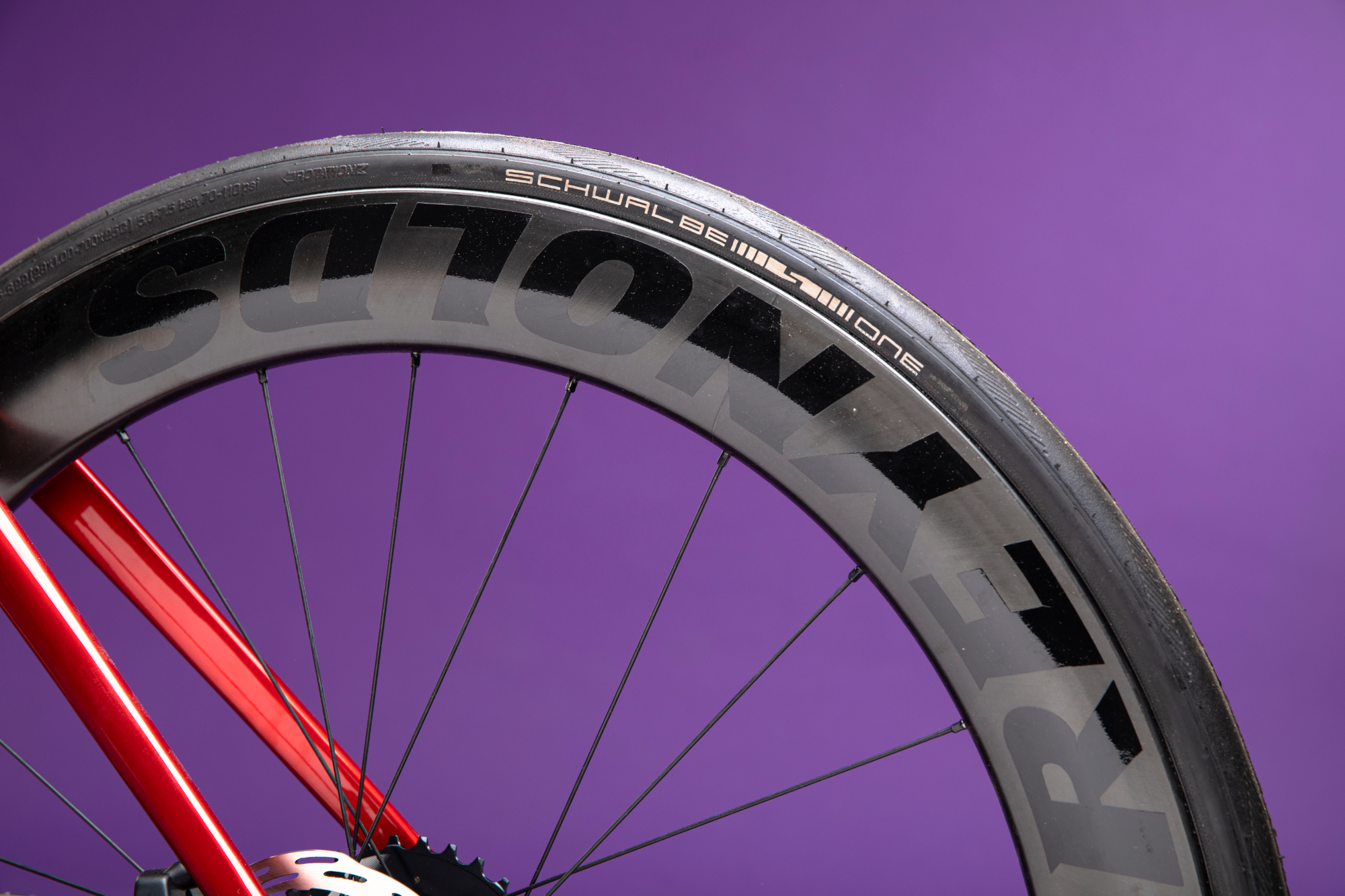
Although with the 25mm Schwalbe One Performance TLE tyres specced, the internal rim widths pretty much does this for you. The front measures 26mm, while the rear is plumped out to almost 28mm.
Moving a little further in from the rims, the nipples specced are brass items, which is reassuring for longevity as brass tends to be a little more corrosion resistant than aluminium – although with a slight weight penalty.
The spokes are straight-pull rather than J-bend, which lends itself to lighter and stronger builds. However, the as spokes themselves are round, they can have a bit of a tendency to just spin in their sockets as you try and tighten them. With a bladed straightpull spoke, it’s possible to hold the spoke in place so it doesn’t spin as you tighten them.
It’s not like this is going to cause a problem day to day, but it’s worth being aware of for adjustments down the line. The hubs are the Reynolds TR3, which are unlikely to set anyone’s heart ablaze, but haven’t caused me any issues on this bike. Overall, the claimed weight for the wheelset is 1,730g, which isn’t too bad considering the depth of the rims.
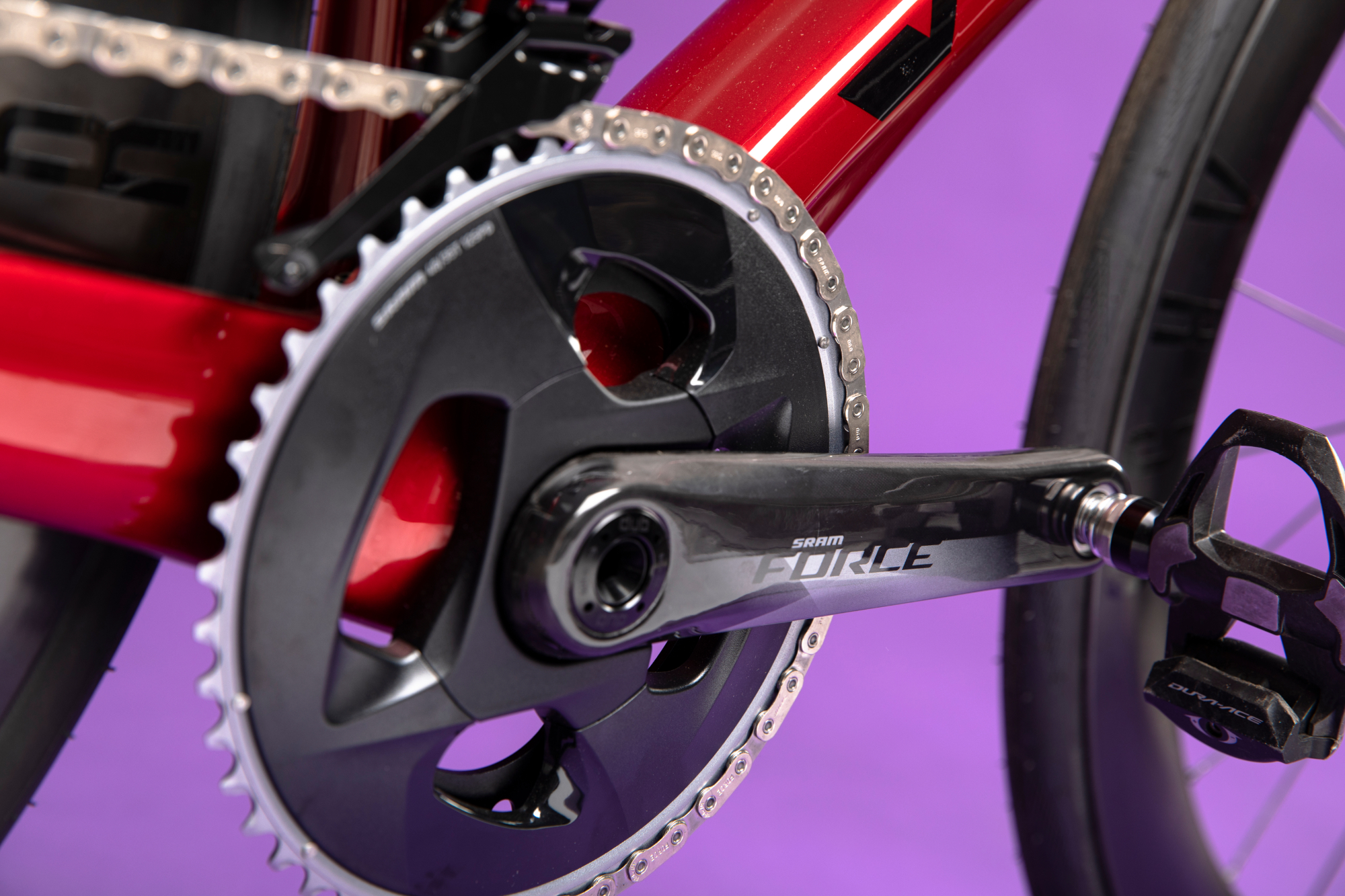
Groupset
The SRAM Force AXS 2x12 hydraulic disc brake groupset gets specced on a lot of bikes and is a great performer. The braking is powerful and predictable, with a 160mm rotor sensibly specced on the front while the rear gets a 140mm rotor as heat build up is generally less of an issue there with the braking forces being a bit lower than at the front.
A 48/35t crankset is paired to a 10–33t cassette, which delivers an excellent range of gearing while still providing comfortable jumps between the gears. At the extremes, the top gear is a little larger than a 52x11 combination – which is what’s most commonly used by amateur racers – while the bottom gear is even a little lower than a 34x32 combination – which is the lowest gear you’d commonly see on even an endurance bike.
This huge range hasn’t been at the cost of large jumps between the gears, though. In fact, from the 11t sprocket up to 21t sprocket (inclusive) the progression is identical to that of an 11 speed 11–28t cassette – which is the one most commonly used by pros in Shimano sponsored teams. In the final three sprockets, the steps do fan out a bit, going -24-28-33 as opposed to -23-25-28. But when you’re reaching for gears that small, generally these jumps won’t present a problem.
10-11-12-13-14-15-17-19-21-24-28-33 — Sram 10–33t 12 spd
xx-11-12-13-14-15-17-19-21-23-25-28 — Shimano 11–28t 11 spd
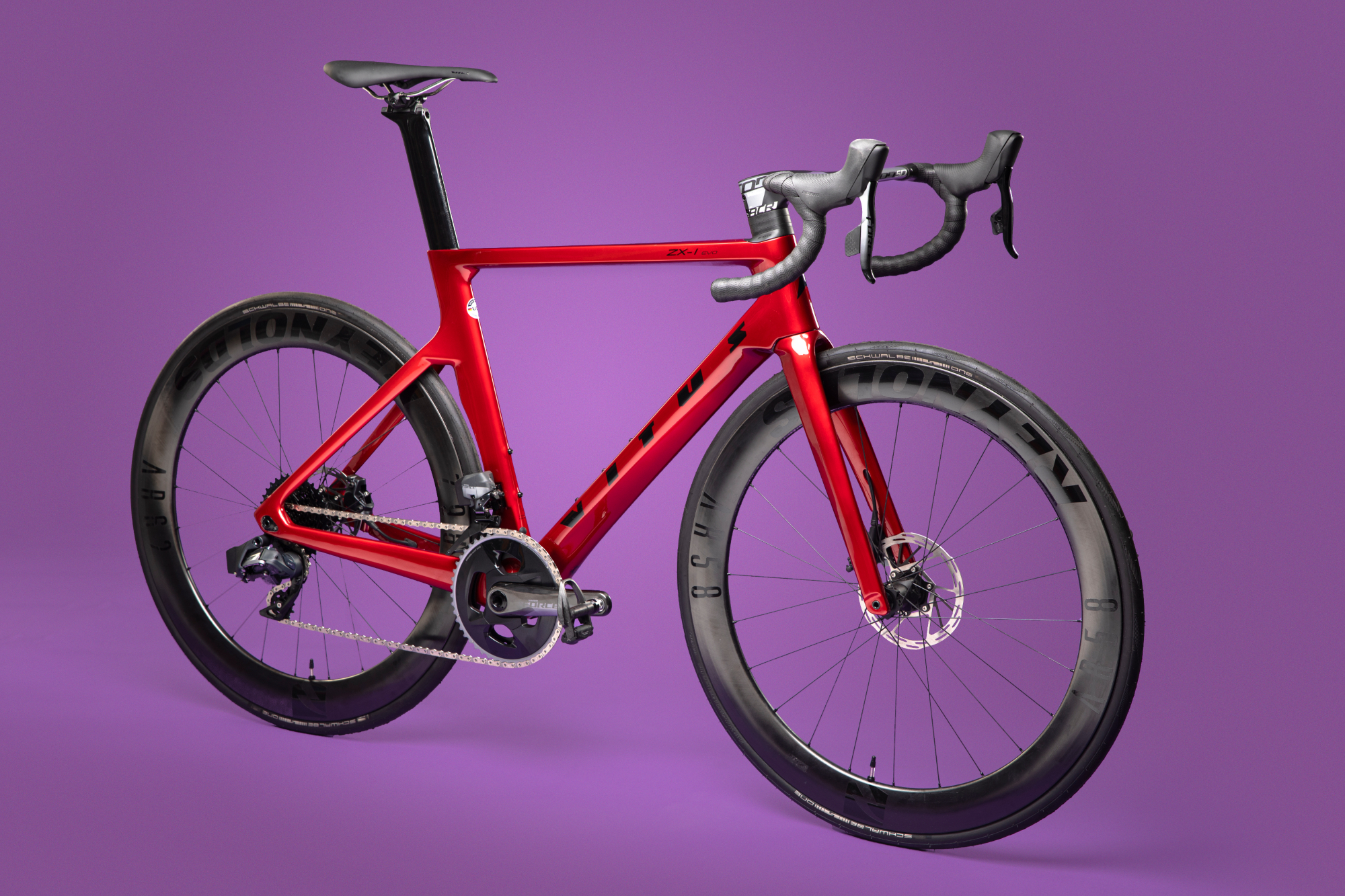
The ride
The Vitus ZX-1 EVO was palpably fast and lent itself to high average speeds. On one tempo ride, I ended up holding 33.8kph over 54km on a route that included 637m of climbing – so it’s not just one for pancake roads. In old money, that’s 21mph over 33 miles, climbing 2,089ft.
At slower speeds when you aren’t putting in much effort, you don’t really go noticeably faster than on a well-set-up endurance bike. But once you wind it up to over 35kph, where some other bikes just feel like a constant effort, on the ZX-1 EVO you feel like you are just cutting through the air and are able to keep ticking along.
For those shorter efforts and punchy climbs which really benefit from carrying a lot of momentum into them, the ZX-1 EVO was a pleasure as well. I was able to keep the speed high with significantly less effort coming into the climbs, then when it comes to putting the power down, the stiff chassis felt incredibly direct. I didn’t feel any twisting of the head tube or flexing around the bottom bracket at all.
Although I haven’t directly compared the ZX-1 EVO against a lightweight climbing bike on these short and hard efforts to see which is fastest, the way the Vitus holds its speed in the lead up and its rigidity when you put the hammer down meant it was certainly quick as well as being a whole lot of fun.
As you would expect, things weren’t quite so rosey on longer efforts up steep hills. With the aerodynamic qualities of the bike having far less of an effect at these slower speeds, I did find myself wishing for a little bit of a lighter build. But to be fair, while the frame of the ZX-1 EVO means this bike will never challenge the feathery heights possible on a Specialized Aethos or Canyon Ultimate, a lighter set of wheels would go a long way to reducing the weight and would really take the edge off extended climbs
The thick seatpost, although great for allowing me to get the saddle in just the right position, did mean that I felt the vibrations from the road a little more keenly compared with a skinnier post. With the tyre pressures properly set, this wasn’t too much of an issue, and it definitely wouldn’t distract me from a race effort. But that said, for longer, more endurance focused rides, anything around 5 hours and over, I’d be looking to a different bike before choosing this one
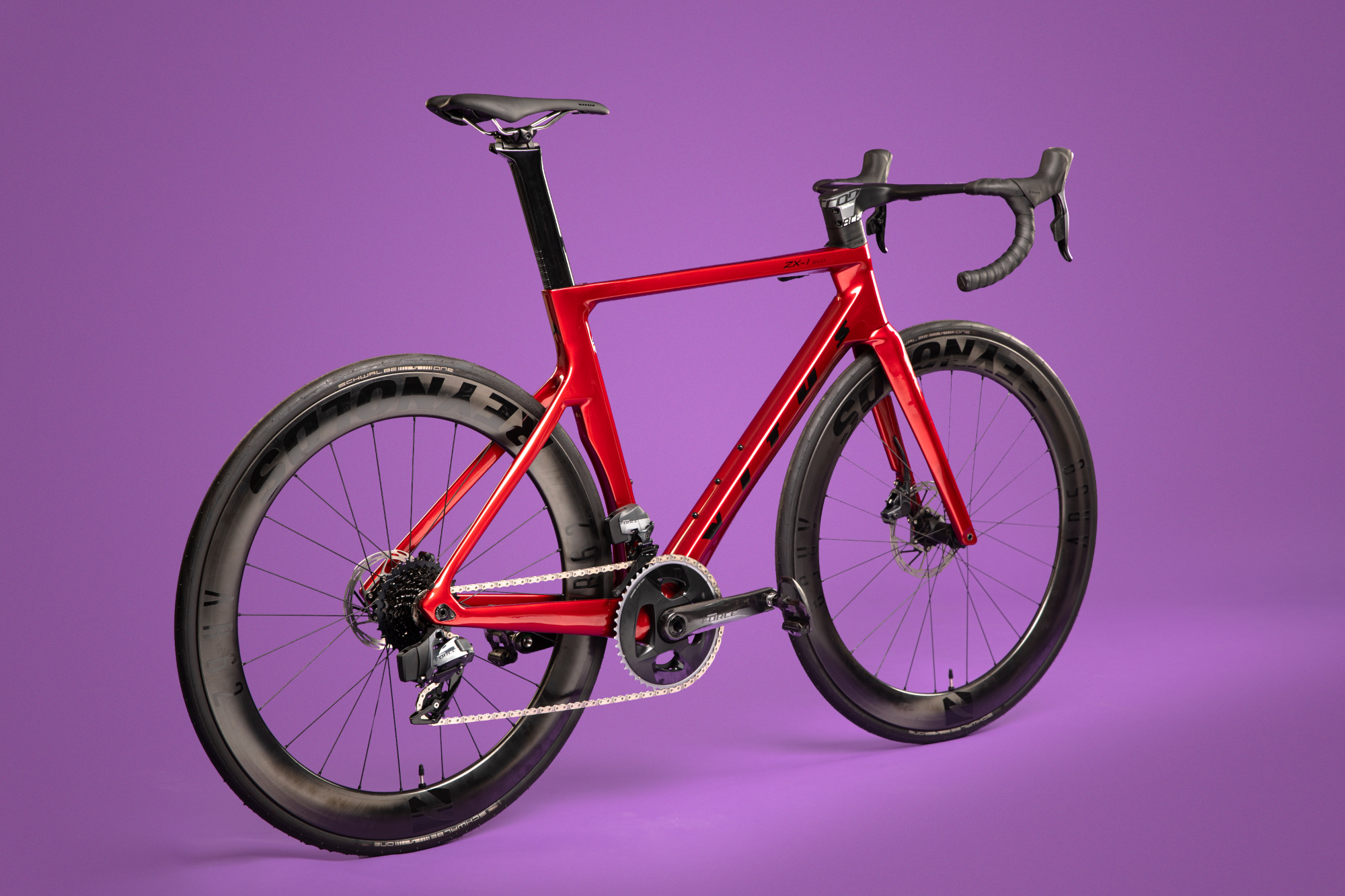
Value
Compared to Ribble’s top end disc brake road bike, the Endurance SL R Disc, the Vitus ZX-1 EVO looks pretty great value for money.
At the time of writing, Ribble aren’t building bikes with SRAM, so to compare apples and apples for value, I’ll be comparing the Shimano Ultegra Di2 specced Vitus ZX-1 Evo – which is identical to the SRAM Force specced ZX-1 Evo in everything other than the groupset – against the Ribble bike.
So, the Ribble SL R Disc is £4,799 for Ultegra Di2, deep wheels and an integrated handlebar/stem (although both the wheels and handlebars are from Ribble’s in-house brand, Level). So, compared to the Ultegra Di2 for a specced to the Vitus, you’re paying £800 more for the Ribble.
Now, to be fair to Ribble, there is a version of that bike with a slightly heavier carbon layup. Not having exact weight of the Ribble and Vitus frames to hand, this slightly heavier and cheaper Ribble might be the better comparison. But even with the cheaper frame the Ribble costs £4,099 compared to £3,999.99 for the Shimano Ultegra specced Vitus.
But although the Ribble Endurance SL Disc might cost a little more and have less fancy – though functionally similar – handlebars and wheels, you can at least choose the length and width of the one-piece handlebar/stem. Considering how important to your bike fit and how personal these measurements are, that’s does make the Ribble a genuine competitor.
Compared to the bigger brands, the Vitus looks excellent value for money. The Scott Foil 10 is an excellent bike and similarly comes with a SRAM force groupset. Although the tyres are wider at 28mm and the wheels aren’t so deep at only 50mm. And it costs £5,949, which is about £1,750 more than the Vitus which is £4,199.99.
Verdict
The Vitus ZX-1 EVO CRS ETAP AXS with its deep wheels, fully integrated cockpit and excellent frame is built to go fast and is race ready out of the box. On paper, the value is almost unmatched, coming in far cheaper than similarly specced bikes from the traditional big brands – as well as undercutting well-priced direct sales brands such as Ribble.
However, this value is somewhat mitigated by the fact you can’t select the reach and width of the one-piece handlebar, which – depending on your measurements – could leave you needing to replace that over £600 component pretty early on.
| Weight | 8.4kg (size medium) |
| Price | £4,199.99 / $5399.99 |
| Sizes | XS–XXL |
| Frameset | ZX-1 EVO Carbon |
| Groupset | SRAM Force AXS HRD 12 Speed |
| Bottom Bracket | SRAM DUB 386EVO |
| Crankset | SRAM Force AXS D1 DUB, 48/35T |
| Chain | SRAM Force D1 |
| Cassette | SRAM XG-1270 D1 10-33 12 Speed |
| Shifters | SRAM Force eTap AXS D1 |
| Brakes | SRAM Force eTap AXS D1 |
| Rotors | SRAM Paceline Centrelock, F-160mm R-140mm |
| Wheels | Reynolds AR 58/62 DB Carbon Clincher, Tubeless |
| Tyres | Schwalbe ONE Performance TLE 700x25 |
| Stem | N/A |
| Handlebar | Vision Metron 5D ACR Carbon (110mm / 420mm) |
| Seatpost | Vitus ZX-1 AERO Carbon |
| Saddle | Vitus Ti Rail |
| Thru-axle | Vitus Switch F-100x12mm R-142x12mm |

Thank you for reading 20 articles this month* Join now for unlimited access
Enjoy your first month for just £1 / $1 / €1
*Read 5 free articles per month without a subscription

Join now for unlimited access
Try first month for just £1 / $1 / €1
Get The Leadout Newsletter
The latest race content, interviews, features, reviews and expert buying guides, direct to your inbox!

After winning the 2019 National Single-Speed Cross-Country Mountain Biking Championships and claiming the plushie unicorn (true story), Stefan swapped the flat-bars for drop-bars and has never looked back.
Since then, he’s earnt his 2ⁿᵈ cat racing licence in his first season racing as a third, completed the South Downs Double in under 20 hours and Everested in under 12.
But his favourite rides are multiday bikepacking trips, with all the huge amount of cycling tech and long days spent exploring new roads and trails - as well as histories and cultures. Most recently, he’s spent two weeks riding from Budapest into the mountains of Slovakia.
Height: 177cm
Weight: 67–69kg
-
 Cycling's riders need more protection from mindless 'fans' at races to avoid another Mathieu van der Poel Paris-Roubaix bottle incident
Cycling's riders need more protection from mindless 'fans' at races to avoid another Mathieu van der Poel Paris-Roubaix bottle incidentCycling's authorities must do everything within their power to prevent spectators from assaulting riders
By Tom Thewlis Published
-
 Man hands himself in to Belgian police after throwing full water bottle at Mathieu van der Poel during Paris-Roubaix
Man hands himself in to Belgian police after throwing full water bottle at Mathieu van der Poel during Paris-Roubaix30-year-old was on Templeuve-en-Pévèle cobbled sector when television pictures showed the bottle hitting him in the face
By Tom Thewlis Published
-
 'I'll take a top 10, that's alright in the end' - Fred Wright finishes best of British at Paris-Roubaix
'I'll take a top 10, that's alright in the end' - Fred Wright finishes best of British at Paris-RoubaixBahrain-Victorious rider came back from a mechanical on the Arenberg to place ninth
By Adam Becket Published